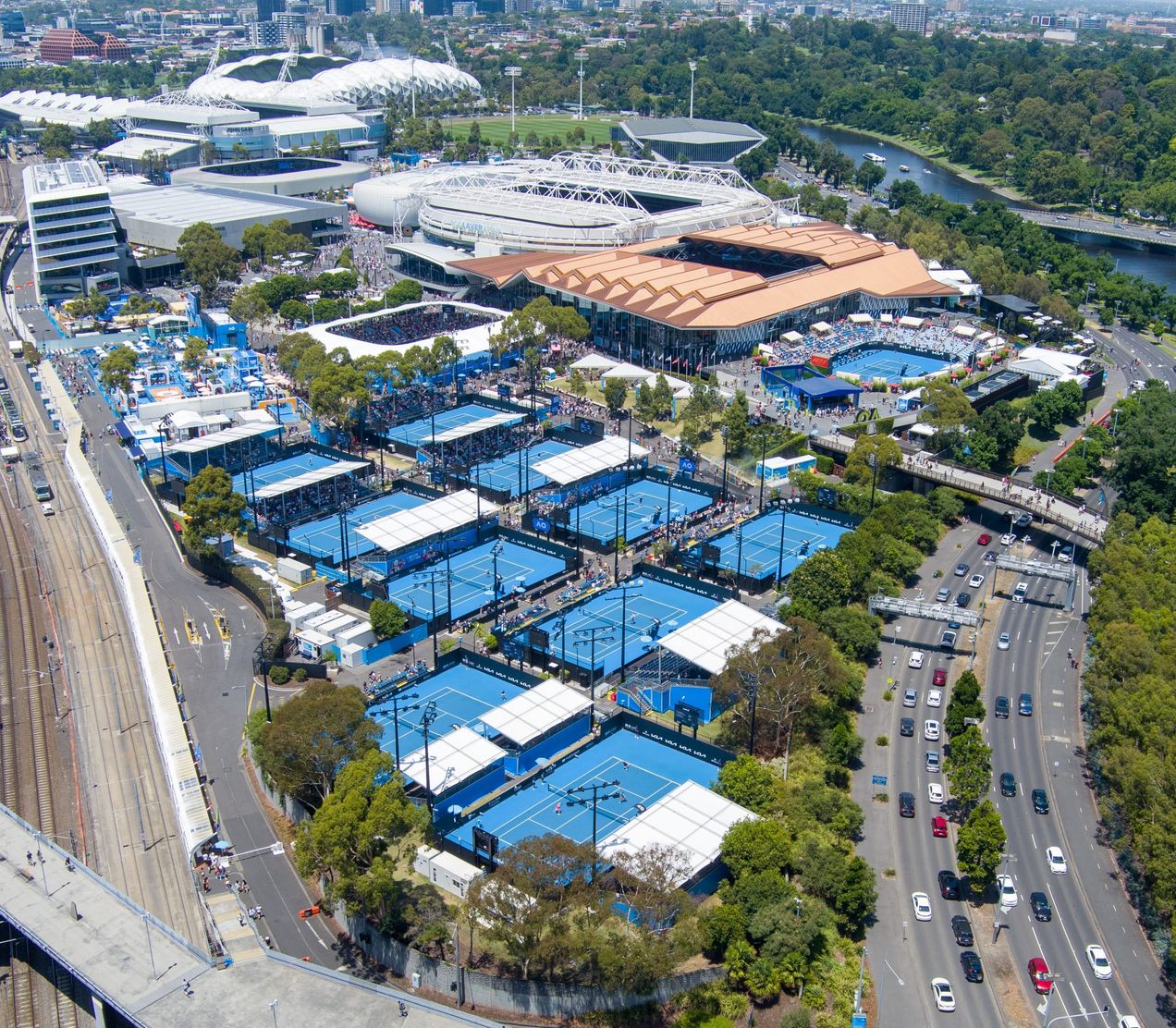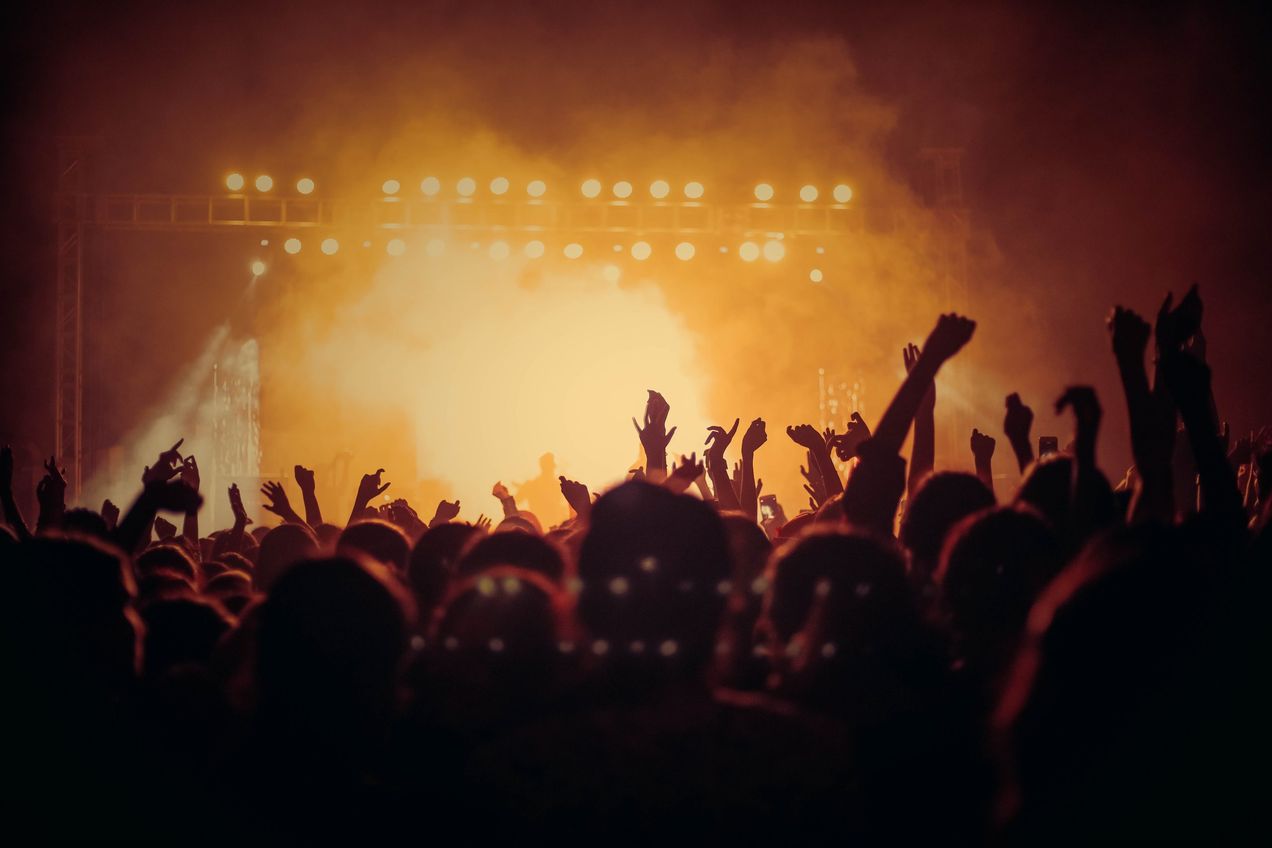Rod Laver Arena – Everything you need to know


Are you curious about the magnificent stadiums of the Australian Open 2024 and its history? In this blog, we take you to modern Melbourne Park and dive into the depths of the iconic Rod Laver Arena.
Table of contents
1) Rod Laver
2) Melbourne Park
3) Rod Laver Arena History
4) Seating capacity
5) Tennis surface type
6) Sports and events
| Stadium | Opened | Capacity | Arena Roof |
|---|---|---|---|
| Rod Laver Arena | 1988 | 14.820 | Retractable |
| John Cain Arena | 2000 | 10.300 | Retractable |
| Margaret Court Arena | 1988 | 7.500 | Retractable |
| Kia Arena | 2021 | 5.000 | Not retractable |
| Show Court 2 | 1988 | 3.000 | Not retractable |
| Show Court 3 | 1988 | 3.000 | Not retractable |
As mentioned , the Rod Laver Arena is the largest tennis stadium located in Melbourne Park. The stadium around the centre court has 14,820 seats. The capacity can be expanded to hold basketball matches or music events. In 2007, for example, there was a record-breaking attendance of 16,813 fans to see Justin Timberlake.
Melbourne Park has much more to offer besides the Rod Laver Arena. With many magnificent stadiums, it would be a shame not to tell anything about them. Below, all the park’s tennis stadiums are listed with the year of opening, capacity and whether the roof is retractable.
Rodney George Laver, better known as Rod Laver, is one of the best players in the history of tennis. Born in Rockhampton, Queensland, Australia, Laver went on to become world number one in tennis from 1964 to 1970. He accumulated an impressive trophy cabinet in his career, including winning a record 200 tournaments, 11 Grand Slam singles titles and eight Pro Majors titles. He is the only player in tennis history to have won all Grand Slam titles in the same year twice.
Laver developed a technically complete serve-and-volley game, with strong strokes to back it up. The left-handed player earned the nickname ‘The Rocket’ due to his hard-hitting. In his time, there were five different surfaces to play tennis: grass, clay, hard, carpet and wood. Rod Laver won a title on each surface. As a result of his achievements, the biggest tennis stadium in Melbourne Park was renamed in his honour, the Rod Laver arena.
Melbourne Park, first opened in 1988, and is now home to seven top national sports teams and welcomes millions of visitors every year. The park, as its name suggests, is in the city of Melbourne, in the Australian state of Victoria and was known as Flinders Park until 1996. The park consists multiple venues: Rod Laver Arena, Margaret Court Arena, John Cain Arena, Kia Arena, Show Court 2 & Show Court 3. Also located at Melbourne Park are Centrepiece, AAMI Park and Olympic Park Oval which is all operated by the Melbourne & Olympic Parks Trust. Centrepiece, unlike the stadiums, is a former media centre and capable of hosting: parties, galas, conferences or large events.
The park is best known for the Australian Open, but also for other sports events, and international acts from musicians such as Beyoncé, The Rolling Stones and Elton John. Thanks to its growing popularity, the park recently underwent a $972 million renovation to improve its capacity for sports and entertainment for years to come. Melbourne Park is the only complex to have three stadiums with retractable roofs.
The Rod Laver Arena was opened in 1988 as part of the National Tennis Centre Complex. The development of the Rod Laver stadium began in 1985 when the Victorian Government set aside part of the then Flinders Park to build a new tennis centre to host the Australian Open. In 1987, the first part of the project was completed, including a retractable roof, large parking area and, of course, the stadium itself with a match court and seats. The following year the stadium opened to host the 1988 Australian Open, with AC/DC the first live band to perform on the site. In 1996 part two of the project was completed with two new show courts, eight new match courts, additional car parking and a garden square.
On 16 January 2000 the ‘National Tennis Centre’ was renamed to the ‘Rod Laver Arena’ in acknowledgement of Rod Laver’s outstanding career. The World Artistic Gymnastics Championships in 2005 and the Commonwealth Games in 2006 were two big events that the Rod Laver Arena hosted.
Historically, tennis courts always featured a grass playing surface. This changed in 1996 at Melbourne Park when grass was replaced by ReboundAce hardcourt. This court could be recognised by the light green colour of the surface of the court. In 2008, a new surface was installed for the Australian Open. The ReboundAce surface was removed and Plexicushion was its replacement. Plexicushion is a surface that dynamically responds to body impact and reduces fatigue on the legs, ankles and feet. The colour of the courts went from green to the characteristic blue. The colour that is still connected to Australian Open to this day. The current hardcourt surface is made of rubber and fibreglass and is of the Greenset brand. Looking at other major tournaments, for example, at Wimbledon is still played on grass, at the US Open on hard courts and at Roland-Garros on clay.
In addition to tennis, Melbourne Park hosts a variety of sports and entertainment events. Examples include basketball, netball, cycling, rugby, football and concerts. The Rod Laver Arena, at the time of writing from October 2023 to its known future offering, is mainly concerned with hosting concerts with names like 50 Cent and Sam Smith, as well as family events like Monster Trucks Live. Besides the park, Melbourne also hosts Formula 1. There will be another battle for first place at the Albert Park Circuit in March 2024.
Melbourne Park is once again the epicentre of this year’s Australian Open. Great matches are coming up again and you can be part of it. Visit a match at the legendary Rod Laver Arena or head to one of the other stadiums to experience the Australian Open up close. Check our website and get your tickets now!





Check some other articles

Recap tennis season 2024: How did the Grand Slams go, who took gold at the Olympics and which tennis players topped the WTA & ATP rankings?

Grand Slam, key dates and the hightlights of the season. Get ready for the tennis season with the ATP schedule 2025!

Check out the 2024 ATP tour calendar. A handy overview of the 4 tennis Grand Slams, ATP Masters 1000, ATP 500 and ATP 250.